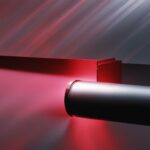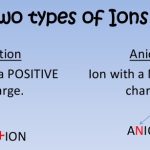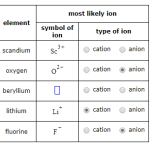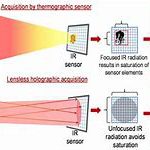Last Updated on 11 months by Francis
positive electrode in an electrical field.
Negative ions, also known as anions, are particles that carry a negative charge. In an electrical field, they are attracted to the positive electrode and move towards it. This phenomenon occurs in a variety of settings, from electrochemistry and ion exchange processes to atmospheric physics and air purification systems. Understanding the movement of negative ions is critical for a range of scientific and technological applications, and can offer important insights into the behavior of charged particles in electric fields.
Contents
Understanding Negative Ions
Negative ions are molecules that have gained one or more electrons, making them negatively charged. These charged molecules are present in the air around us, and their concentration can vary depending on the environment. Negative ions are produced naturally in nature, such as near waterfalls, thunderstorms, and the ocean. They can also be artificially generated using ionizers or air purifiers. Negative ions have been found to have numerous health benefits, including improving mood, reducing stress, and boosting the immune system.
How Negative Ions Work
Negative ions work by attracting positively charged particles, such as dust, allergens, and bacteria. When negative ions come into contact with these particles, they attach to them and become heavier, causing them to fall to the ground or stick to surfaces. This process is known as ionization, and it helps to purify the air we breathe. Negative ions can also interact with the human body, promoting the production of serotonin, a neurotransmitter that regulates mood and sleep.
Negative ions can have numerous health benefits, including improving mood, reducing stress, and boosting the immune system. They work by attracting positively charged particles in the air and helping to purify the air we breathe. Negative ions can also interact with the human body and promote the production of serotonin, a neurotransmitter that regulates mood and sleep. Areas with high levels of negative ions, such as near waterfalls or in the forest, have been found to have a positive effect on mood and well-being. Negative ionizers and air purifiers are effective ways to artificially increase negative ions in the air, but it’s important to consider the size of the room and the type of pollutants you want to remove when choosing one. There are also other negative ion products on the market, but their effectiveness has little scientific evidence to support it.
The Science of Negative Ions
The science behind negative ions is still being studied, but researchers have found evidence that negative ions can have a positive effect on the body. Studies have shown that negative ions can improve cognitive performance, reduce depression and anxiety, and even improve lung function in people with respiratory problems. Negative ions have also been found to have a calming effect on the body, reducing stress and promoting relaxation.
Myths and Misconceptions
Despite the numerous health benefits of negative ions, there are still some misconceptions surrounding their use. Some people believe that negative ions can cure diseases or that they are harmful in large quantities. However, there is no scientific evidence to support these claims. Negative ions are generally considered safe, and there have been no reported cases of negative ion toxicity.
Negative Ions and our Environment
Negative ions are present in the environment around us, and their concentration can vary depending on the location. Areas with high levels of negative ions, such as near waterfalls or in the forest, have been found to have a positive effect on mood and well-being. In contrast, areas with low levels of negative ions, such as indoors, can have a negative effect on health.
Negative ions, which are naturally present in nature and can also be artificially generated through ionizers and air purifiers, have numerous health benefits and can improve mood, boost the immune system, and reduce stress. Negative ions work by attracting and attaching to positively charged particles in the air, such as dust and allergens, and promoting the production of serotonin, a neurotransmitter that regulates mood and sleep. While there are some myths and misconceptions surrounding the use of negative ions, they are generally considered safe and can have a positive impact on air quality and overall health. Spending time in nature and using ionizers or air purifiers are effective ways to increase exposure to negative ions. Choosing the right device depends on the size of the room, type of pollutants targeted, noise level, and energy consumption. While some negative ion products, such as salt lamps and bracelets, may be effective at generating negative ions, there is limited scientific evidence to support their use.







